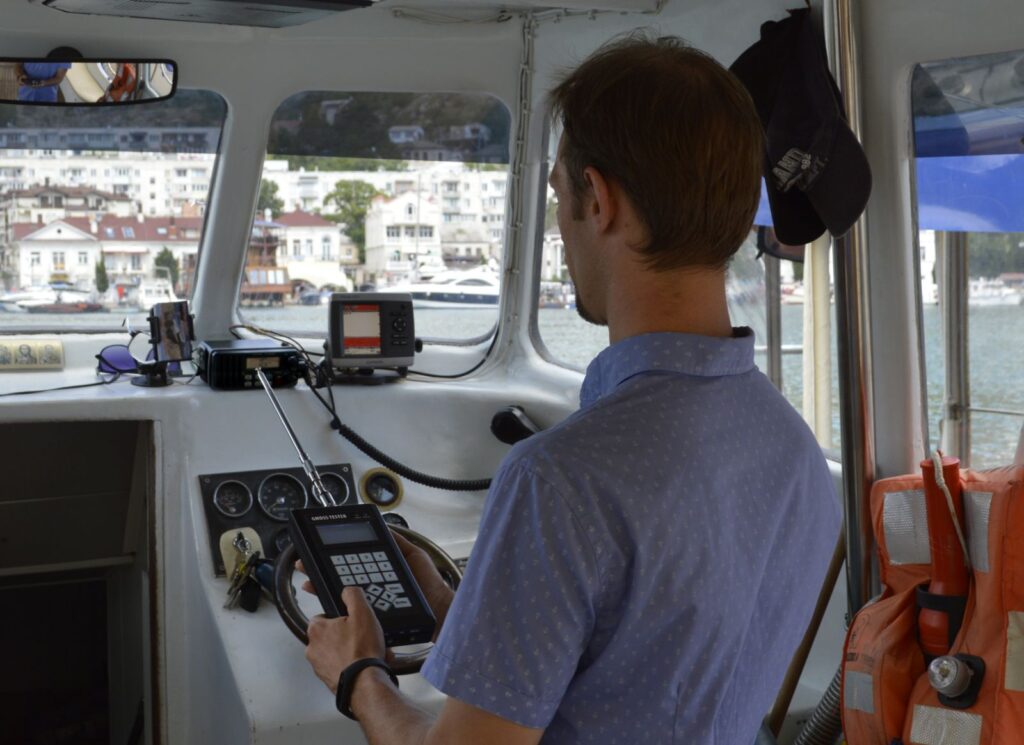SSB and GMDSS Equipment Programming Services
Comprehensive SSB Programming Services
We specialize in professional programming services for various makes and models of SSB equipment. Our offerings encompass resetting MMSI numbers, updating vessel details, and reprogramming SSB and GMDSS equipment during vessel flag changes, MMSI changes, or vessel name changes.
SSB Pre-Programming Services
We provide pre-programming services for SSB units purchased from us. This service streamlines the installation process by eliminating the need for manual setup, software installation, and unit programming.

Pre-Programming Procedure:
- Testing: The unit undergoes a series of tests.
- Performance Check: We verify transmission and reception performance.
Once pre-programmed, the SSB unit is ready for immediate installation and use upon delivery.
GMDSS Equipment Reprogramming
When acquiring a new or pre-owned vessel or updating vessel details such as name, MMSI, flag, or class, reprogramming of all GMDSS equipment is essential. Our team, with 16 years of experience, includes class-certified engineers and technicians adept at programming various GMDSS equipment models. We offer on-site reprogramming services as needed.
Post-Programming Services:
- Testing and Certification: We conduct thorough testing and provide certification of the equipment.
- Detail Update: The equipment is updated with the new vessel details.
Required Information for Programming
To utilize our SSB programming service, please email the following details:
- Vessel Name
- Vessel MMSI Number
- Vessel Call Sign
- Vessel Type
- Flag of The Vessel
- Port of Registry
Contact Us
Ensure your SSB and GMDSS equipment are accurately programmed and certified. Contact us today for reliable and efficient programming services!
Supported Equipment Models
| Make | Model |
|---|---|
| ICOM | IC-M801E |
| Furuno | FS-1575 |
| JRC | JSS-2150 |
| Thrane & Thrane | SAILOR 6301 SSB |
| Samyung | SRG-3150DN |
| Furuno | FS-2570 |
| Iridium | Iridium Pilot SSB System |
| SAILOR | 6300 SSB |
| SAILOR | 6310 SSB DSC Class A |
SSB Radio (Medium Frequency/High Frequency) FAQ
1. What is an SSB radio?
Answer: An SSB radio is a maritime communication device that operates on medium frequency (MF) and high frequency (HF) bands. It facilitates long-distance voice and data communication, including distress and safety transmissions.
2. How does SSB radio work?
Answer: SSB radios transmit and receive signals over long distances by reflecting radio waves off the ionosphere, enabling communication beyond the line of sight, essential for maritime communication over vast ocean areas.
3. What are the main uses of SSB radio on ships?
Answer: SSB radios are used for routine ship-to-ship and ship-to-shore communication, distress and safety calls, receiving weather forecasts and navigational warnings, and participating in GMDSS (Global Maritime Distress and Safety System).
4. What is GMDSS and how is SSB radio involved?
Answer: GMDSS is an international safety system using various communication methods, including SSB radio, to ensure ships can send distress signals and receive urgent safety information. SSB radios are integral to GMDSS for long-range communication.
5. What frequencies do SSB radios operate on?
Answer: MF radios operate between 300 kHz and 3 MHz, while HF radios operate between 3 MHz and 30 MHz. Specific frequencies within these ranges are allocated for maritime communication.
6. What is Digital Selective Calling (DSC)?
Answer: DSC is a standard for sending pre-defined digital messages via SSB radios, enabling automatic distress alerts with position data, selective calling to other vessels or shore stations, and communication without continuous monitoring of the radio.
7. How do I send a distress signal using an SSB radio?
Answer: To send a distress signal, switch the radio to DSC mode, select the distress call option, and transmit. The radio will send a digital distress alert with your MMSI (Maritime Mobile Service Identity) and location. Follow up with a voice distress call on the designated distress frequency.
8. What are the key features to look for in an SSB radio?
Answer: Key features include DSC capability, frequency coverage, power output, ease of operation, integration with other navigation systems, and durability. Some radios also offer GPS integration and built-in weather receivers.
9. How is an SSB radio installed on a vessel?
Answer: Installation involves mounting the transceiver unit, connecting it to a power supply, installing an appropriate antenna system, grounding the unit, and integrating it with other communication and navigation systems. Professional installation is recommended.
10. What is the range of an SSB radio?
Answer: The range of SSB radios varies based on frequency, time of day, atmospheric conditions, and antenna efficiency. MF radios can typically cover several hundred nautical miles, while HF radios can communicate over thousands of miles.
11. Do I need a license to operate an SSB radio?
Answer: Yes, operating an SSB radio requires a maritime radio operator license. Additionally, the vessel must have a ship radio station license, and the radio must be registered with the relevant maritime authorities.
12. How do I maintain my SSB radio?
Answer: Regular maintenance includes checking the antenna and grounding systems, ensuring connections are secure, testing the DSC functionality, updating software (if applicable), and keeping the unit clean and dry. Periodic professional servicing is also recommended.
13. What are common issues with SSB radios and how can they be resolved?
Answer: Common issues include poor transmission quality, interference, and antenna problems. These can often be resolved by checking antenna connections, ensuring proper grounding, adjusting settings, and avoiding sources of electromagnetic interference.
14. Can SSB radios be used for data communication?
Answer: Yes, SSB radios can transmit data using protocols like SITOR (Simplex Teletype Over Radio) and PACTOR for email, weather data, and other text-based communications.
15. What should I do if my SSB radio stops working during a voyage?
Answer: If your SSB radio stops working, check the power supply, antenna connections, and settings. Use alternative communication methods, such as VHF radio or satellite phone, to report the issue and seek assistance. Ensure you have backup communication systems as part of your vessel’s safety equipment.
